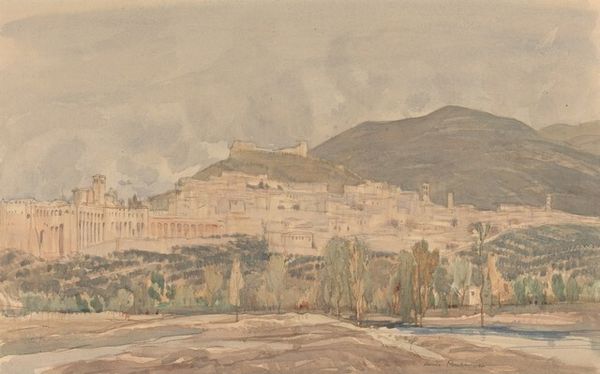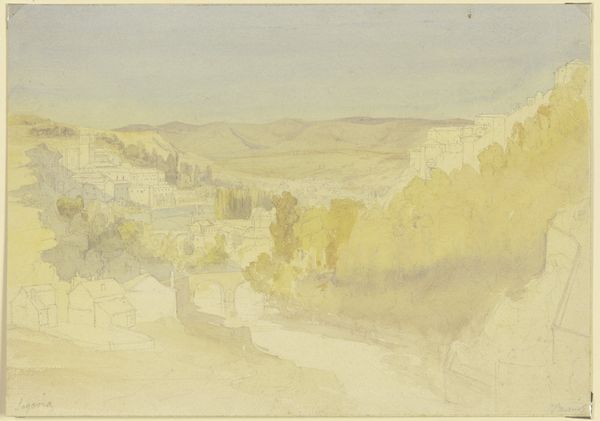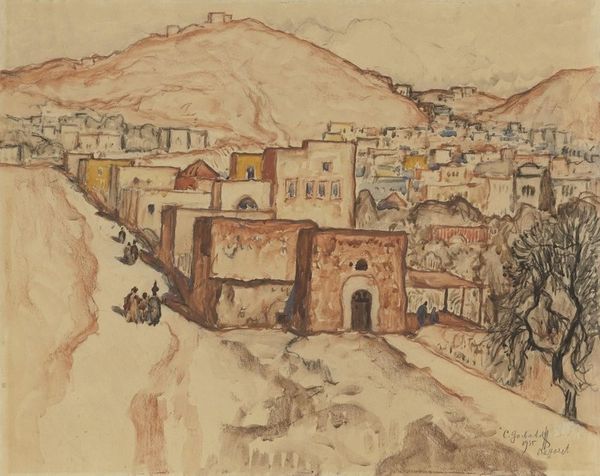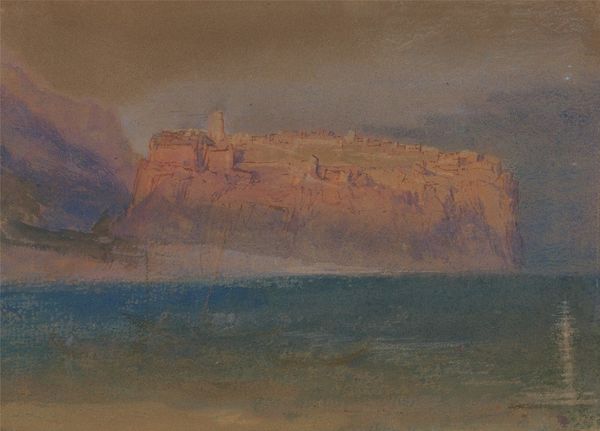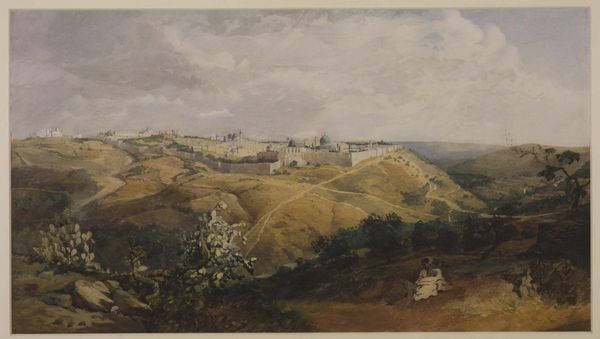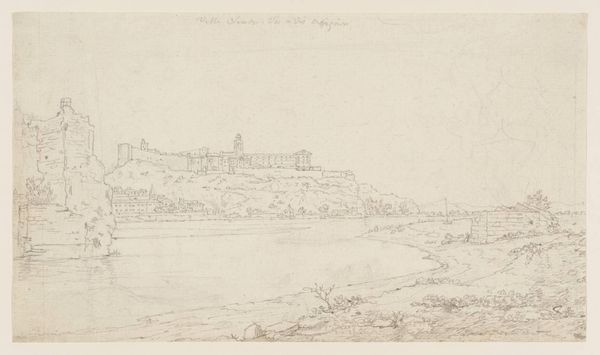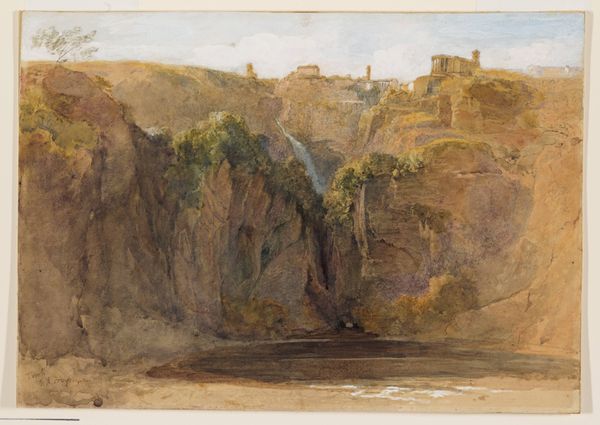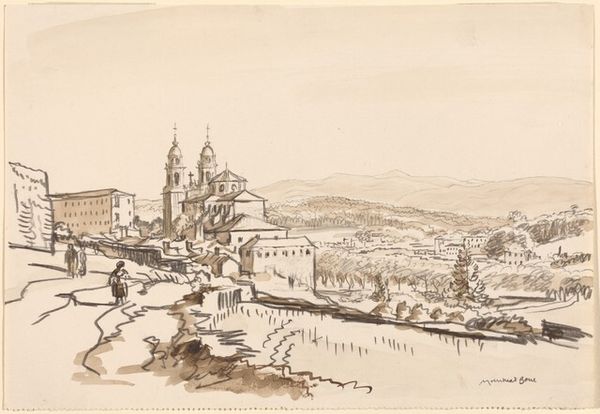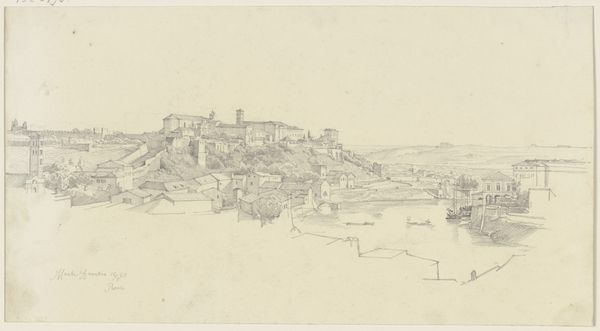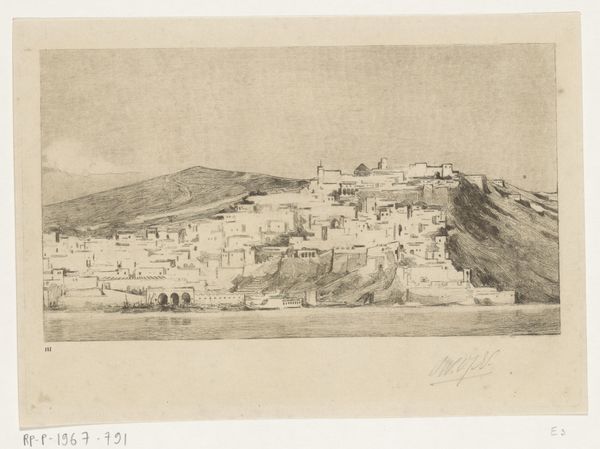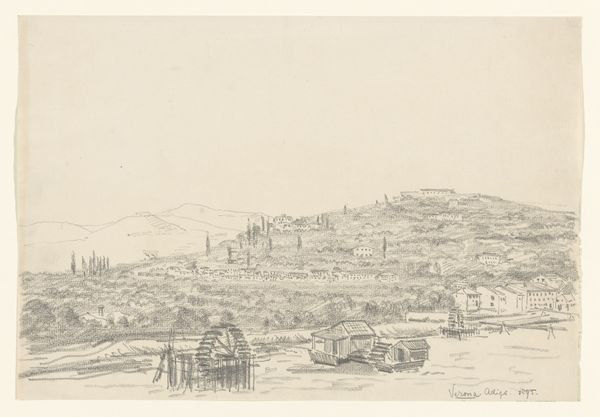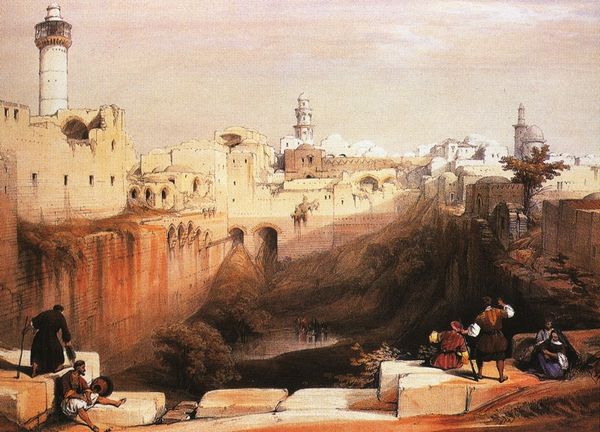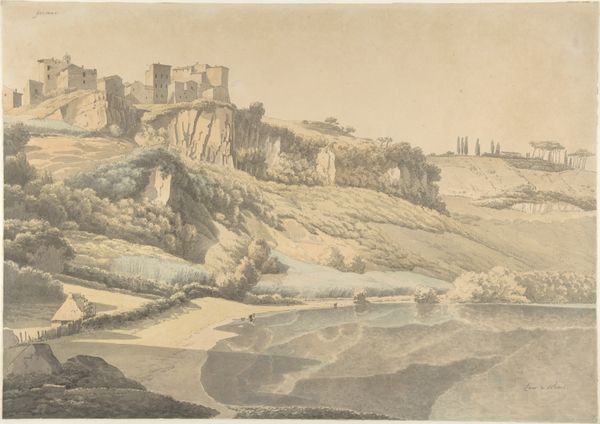
painting, watercolor
#
painting
#
landscape
#
watercolor
#
romanticism
#
orientalism
#
cityscape
#
watercolour illustration
#
watercolor
Copyright: Public Domain: Artvee
Curator: David Roberts’ watercolor, "The Alcazaba from the Mole, Malaga," completed in 1839, captures a tranquil cityscape bathed in muted tones. Editor: My first impression is one of faded grandeur. There’s a strong emphasis on geometric forms – the rectangular buildings stacked atop one another. And I note the limited palette: primarily earthy ochres and subdued blues, rendering a sort of ghostly effect. Curator: Indeed, Roberts meticulously utilizes watercolor to create subtle gradations, the texture and dilution speaks volumes about his command of the medium, achieving a layered, luminous quality that transcends mere topographical rendering. Editor: Right. But even focusing on the physical application, you can see where his labor went. He chose the materials he did for very particular reasons. That kind of paper would likely allow for controlled absorption. Looking at the marks left on the surface you get a sense for how many successive glazes it would have taken to arrive at the subdued finished surface of the buildings. Curator: And this restrained use of color serves to emphasize the structure's enduring architectural presence. The composition directs the viewer's gaze from the boats gently rocking in the foreground up toward the formidable fortress that crowns the hilltop. Editor: It brings to mind, thinking about process, the entire enterprise of Orientalism at that time and its effect on the global movement of painting equipment! Can we consider what material support structures allowed Roberts to realize his aesthetic project so far from his homeland? Curator: An insightful point. The overall effect certainly evokes the Romantic interest in capturing the exoticism and sublimity of distant lands; what strikes me most is the controlled artistic intention at play, bringing forth something quite moving. Editor: I agree, although I am reminded by these glimpses of production that the aesthetic value, as you name it, arises from both human labor and trade infrastructure—all sorts of factors we don’t tend to think about when experiencing these sublime compositions. Curator: This piece offers, finally, not merely a landscape but a thoughtful articulation of space and history. Editor: An articulation borne from complex physical labor, and the convergence of human networks that allowed such a subtle rendering to occur.
Comments
No comments
Be the first to comment and join the conversation on the ultimate creative platform.
